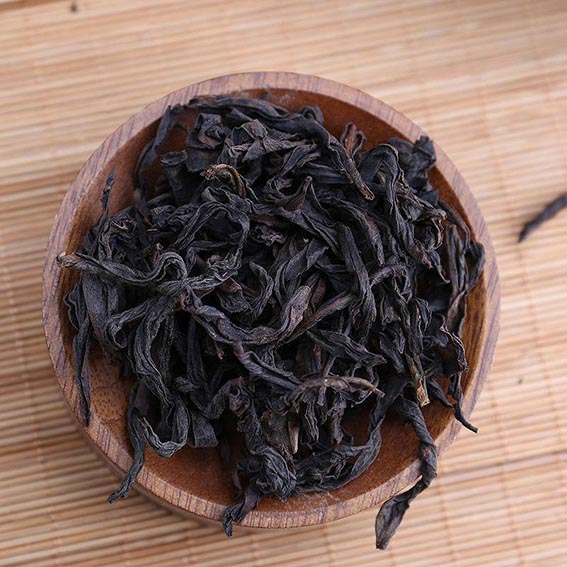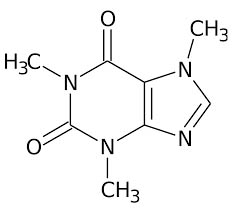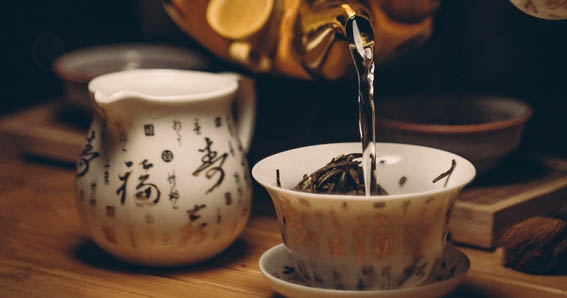Introduction
The world of tea is fascinating for many reasons. Tea is probably the most consumed beverage in the world after water, and is ubiquitous in many countries around the globe. And yet, much of the information that circulates about this drink is often wrong or inaccurate.
Doing a Google search before writing this article, we found that almost all of the resulting entries we have reviewed contain some misinformation.
We believe this is because most of this information comes from relatively old sources, which are outdated, and reproduce the myths and beliefs that were once held about this plant in the West.
Nowadays we all know that the different varieties of tea are produced from the same species of plant: the camellia sinensis. However, the average consumer still knows little about the process and the differences between tea varieties.
In this post we want to comment on some myths and point out some erroneous information that usually circulates on the internet, even on apparently specialized pages on the subject.

Myths about tea
Tea varieties
There are six main varieties of tea: green tea (lǜ chá 綠茶), yellow tea (huáng chá 黃茶), white tea (bái chá 白茶), qīng chá 青茶 or wūlóng 烏龍 tea, black tea (hóng chá 紅茶) and post-fermented tea (hēi chá 黑茶). These six varieties clearly differ in their processing, with specific characteristics that define them.
Pǔ'ěr 普洱 is not a variety, it is a sub-type of tea belonging to the variety of post-fermented teas, that is, one among many existing teas within this variety.
The names "black tea" and "red tea" are rather unfortunate nomenclatures that we use in the West, since "black tea" refers to what in China is called hóngchá (red tea), and red tea... in some countries refers to cooked Pǔ'ěr (shú chá 熟茶) which, as we have said, is a type of post-fermented tea. And the variety of post-fermented teas is known in China as hēi chá (black tea). Confusion is served!
Oxidation or fermentation?
There is a great deal of debate about whether tea is oxidized or fermented. The Chinese use the word jiào 酵 (fermentation) to refer to the processes that happen in tea. When tea began to be studied in the West, it was concluded that tea was not fermented, but oxidized. The reason for this statement is that, with the exception of so-called post-fermented teas, most varieties of tea do not involve fungal or bacterial fermentation.
However, fermentation is a degradation of molecules that can occur in the absence of microorganisms, and in the case of tea, there is enzymatic fermentation, which occurs at the same time as oxidation.
Therefore, we believe that, in most cases, we can speak of oxidation and fermentation interchangeably, as long as it is clear that we are not referring to a fermentation produced by microorganisms. Only post-fermented teas involve microbiotic fermentation.

The oxidation or fermentation process darkens the tea leaf. This oxidation is similar to what occurs when a fruit such as an avocado or apple is cut and its cells are exposed to oxygen in the air.
Caffeine/theine
Tea contains caffeine. Although some people refer to this substance, when it is present in tea, as "theine", we must understand that it is the same molecule present in coffee.
However, the amount of caffeine contained in a cup of tea is significantly less than that contained in a cup of coffee. And here we come to a widespread myth: that of black tea to wake up in the morning. We have also read at times that they recommended green tea to drink in the late afternoon, to relax. Nothing could be further from the truth!
Although the amount of caffeine contained in tea depends on other factors rather than on the variety (such as the part of the tea that is harvested, or the time of year), in general, green tea is the most exciting or energizing of all, and has long been used in monasteries in China to keep monks awake and promote meditation.
Black tea might have a higher amount of caffeine than green tea, but this statement, despite being true, is misleading. The absorption of this caffeine is lower and, therefore, the amount of this substance that passes into the body is lower in black tea than in green tea. So when we drink green tea we are absorbing more caffeine than when we drink black tea, and therefore it has a stronger effect.
In short, oxidation increases molecular complexity, and caffeine forms bonds with other substances that make it difficult for the body to absorb it. This makes black tea have a more relaxing effect than green tea.
On the other hand, the effect of caffeine in tea is different than its effect in coffee. In tea we also find a substance called L-theanine, which has a relaxing effect. The combination of the two produces an effect of relaxed alertness, mental clarity, without exciting the mood in the same way as coffee.
For more on caffeine in tea, we recommend this article from Young Mountain Tea.

Caffeine or theine molecule.
Water temperature
Currently, it is quite common in the West for tea sellers to recommend different water temperatures for each variety of tea, with the premise that boiling water "burns" the leaves or buds.
This is totally false, since tea, when processed, reaches temperatures much higher than those of boiling water, without damaging its leaves or buds. In China, we have never seen anyone brew tea with water below 100 degrees, regardless of the variety. What's more, only boiling water solubilizes all the substances present in the tea and extracts all its flavour. If we add water at a lower temperature, we will be extracting fewer components from the leaf.
So what's the point of these recommendations to use 70 or 80 degree water for green or white tea? In truth, this temperature is very good for camouflaging the poor quality of some tea!
When a tea has been poorly processed, doesn't come from a good plant, hasn't been finely harvested, or contains resins, using boiling water will extract all of its... bad taste. In that case, it may be preferable to lower the temperature of the water at the expense of losing properties (although if the tea is not good, it doesn't matter much either).
So, in general, what we recommend if we want to get all the benefits of tea is to buy good quality tea and prepare it at 100 degrees, to be able to extract all its components, flavour and beneficial properties.
Note: There are some exceptions to this rule, such as Japanese Gyokuro, which is traditionally brewed with an infusion at sixty degrees or even lower for a long time.

White tea is not oxidized
Again, we often find this claim, which is totally false. The only tea with 0% oxidation, if well processed, is green tea. White tea generally has an oxidation/fermentation of between 10% and 15%.
Not all white tea is harvested in the spring, either. There are, in fact, famous Fújiàn 福建 white teas that are harvested in summer and autumn, such as Shòuméi 壽眉 and Gòngméi 貢眉.

Green tea is the only one with 0% oxidation, if it is well processed.
Quality teas are made only with buds
While it is true that, in some types of tea, the content of buds is closely related to their quality, it is also true that other types of tea do not necessarily have to contain buds.
For example, wūlóng tea generally does not contain buds, since the aggressive processing to which it is subjected would destroy them, and this fact does not compromise its quality in any way.
Note: There is some special type of wūlóng that contains buds, such as the Dōngfāng Měirén 東方美人, but it is the exception to the rule.
These are some of the most common misinformation we have found while searching for information on the internet. If you know of any other myths or misconceptions, we invite you to leave us a comment and share them with us.

2 thoughts on “Myths and Falsehoods About Tea”
Could you please discuss the kung fu method of tea preparation?
Hi, Ross Sifu,
We have an old post regarding Gong Fu method, but it’s in Spanish (here) and probably it could be redone again. We’ll keep it in mind in order to post it in English too. Thanks for the idea.
Regards